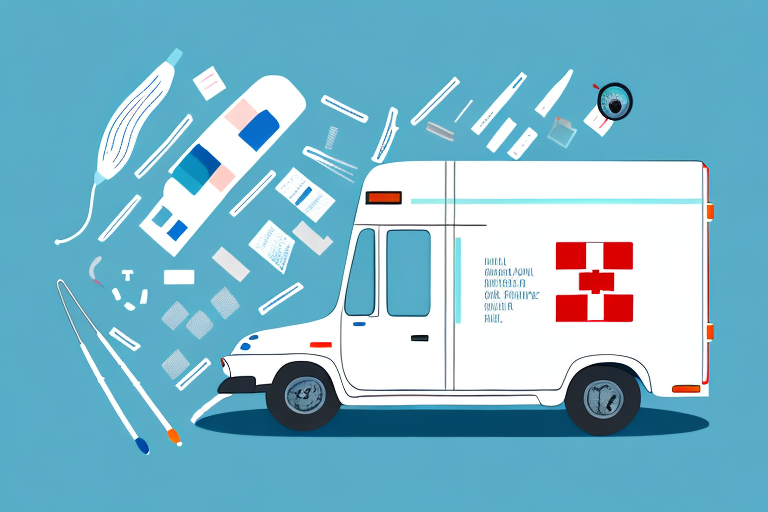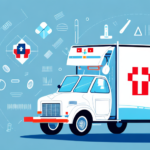Understanding the Market Demand for Medical Supplies Delivery
The demand for medical supplies delivery services has been steadily increasing, driven by demographic shifts such as an aging population and the rising prevalence of chronic illnesses. According to Grand View Research, the global medical supplies market is projected to reach $133.5 billion by 2025, up from $86.9 billion in 2019.
Several factors contribute to this growing demand:
- Aging Population: An increasing number of elderly individuals require regular medical supplies, including insulin, catheters, and wound care products.
- Rising Healthcare Costs: As healthcare costs continue to rise, home-based care becomes a more attractive and cost-effective option for many patients.
- Impact of COVID-19: The pandemic has accelerated the need for home delivery of essential medical supplies to minimize exposure risk. This has led to a surge in services offering medical supplies delivery.
Conducting Market Research and Developing Your Business Plan
Identifying Your Target Audience
Begin by defining who your primary customers will be. This includes individuals with chronic illnesses, elderly patients, and healthcare facilities requiring regular supply deliveries.
Analyzing the Competition
Research existing medical supplies delivery businesses to identify gaps in the market. Understanding your competitors' strengths and weaknesses can help you develop strategies to differentiate your services.
Developing Your Unique Selling Proposition (USP)
Your USP could involve offering personalized delivery schedules, utilizing advanced tracking technology, or providing a broader range of products. A strong USP will set your business apart from competitors.
Financial Projections and Funding
Create detailed financial projections, including startup costs, operating expenses, and revenue forecasts. Consider funding options such as small business loans, venture capital, or angel investors to secure the necessary capital.
Legal Requirements and Compliance
Registering Your Business
Choose an appropriate business structure (e.g., LLC, corporation) and register your business name with the relevant authorities. Ensure that you're compliant with local, state, and federal regulations.
Obtaining Necessary Licenses and Permits
Depending on your location and the services you offer, you may need specific licenses or permits to operate legally. Consult with local regulatory bodies to understand the requirements.
Ensuring Industry Compliance
Stay informed about healthcare regulations and standards to ensure that your business adheres to all necessary compliance measures, protecting both your business and your customers.
Securing Funding and Financial Planning
Exploring Funding Options
- Small Business Loans: Traditional loans from banks or credit unions can provide the capital needed to start your business.
- Investors: Seek out investors who are interested in the healthcare or logistics sectors to secure funding without taking on debt.
- Bootstrapping: Using personal savings or reinvesting profits can be a viable option for funding your business, especially in the early stages.
Creating a Solid Financial Plan
Develop a comprehensive financial plan that outlines your budget, projected income, and expenditure. This plan will guide your financial decisions and help attract potential investors or lenders.
Building Operations and Supply Chain
Finding Reliable Suppliers
Establish partnerships with reputable medical supplies manufacturers and distributors to ensure a steady and reliable inventory. Attend industry trade shows and conferences to network with potential suppliers.
Setting Up an Efficient Delivery System
Implement advanced logistics and tracking software to optimize delivery routes and ensure timely deliveries. Consider investing in technology that enhances inventory management and tracking.
Purchasing Vehicles and Equipment
Invest in reliable delivery vehicles and necessary equipment to handle and transport medical supplies safely. Regular maintenance and proper equipment management are crucial for operational efficiency.
Recruiting and Training Your Team
Hiring Skilled Employees
Recruit individuals with experience in logistics, transportation, or healthcare. Conduct thorough background checks to ensure the reliability and trustworthiness of your delivery team.
Providing Comprehensive Training
Offer training programs that cover safe handling and transportation of medical supplies, customer service skills, and communication protocols. Ongoing training ensures high-quality service delivery.
Maintaining Quality Control
Implement regular performance evaluations and feedback mechanisms to maintain high standards of service. Address any issues promptly to ensure customer satisfaction.
Marketing and Customer Acquisition
Developing a Professional Website
Create a user-friendly website that clearly outlines your services, pricing, and contact information. Optimize your website for search engines to improve online visibility.
Leveraging Social Media
Use social media platforms to promote your services, engage with customers, and share relevant industry news. Social media can be a powerful tool for building brand awareness.
Establishing Partnerships with Healthcare Providers
Partner with hospitals, clinics, and private practices to offer your delivery services as a reliable option for their patients. These partnerships can provide a steady stream of referrals and business opportunities.
Managing and Growing Your Business
Maintaining Effective Operations
Implement key performance indicators (KPIs) to monitor your business's performance. Regular audits and customer feedback can help identify areas for improvement.
Dealing with Challenges and Risks
Develop contingency plans to address potential risks such as supply chain disruptions or regulatory changes. Staying proactive in risk management will help your business remain resilient.
Expanding to New Markets and Services
As your business grows, consider expanding into new geographic markets or offering additional services to meet evolving customer needs. Strategic expansion can drive long-term growth.
Monitoring Industry Trends and Innovations
Stay informed about the latest trends and technological advancements in the medical supplies and logistics industries. Adopting innovative solutions can keep your business competitive.
Building a Strong Customer Base and Reputation
Providing Exceptional Customer Service
Prioritize customer satisfaction by offering reliable, timely deliveries and responsive support. Exceptional service can lead to positive reviews and repeat business.
Implementing Customer Feedback Mechanisms
Use surveys, reviews, and direct feedback to understand customer needs and improve your services continuously. Engaging with customers builds trust and loyalty.
Establishing a Positive Reputation
A strong reputation in the industry can attract new customers and partners. Focus on delivering high-quality services and maintaining professional relationships to enhance your brand image.
Conclusion
Starting a medical supplies delivery business involves understanding market demand, meticulous planning, securing necessary funding, and ensuring compliance with industry regulations. By building a reliable supply chain, recruiting a skilled team, and implementing effective marketing strategies, you can establish a successful and sustainable business. Continuously managing operations, addressing challenges proactively, and staying abreast of industry trends will help your business thrive in the competitive medical supplies delivery sector.




















